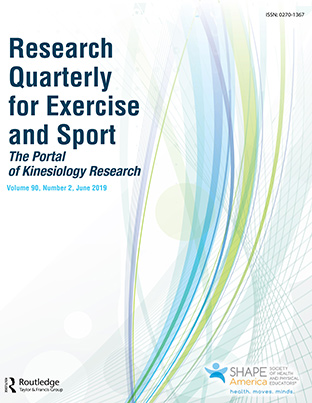 RQES Table of Contents
RQES Table of Contents
Facilitators and Barriers to Movement Integration in Elementary Classrooms: A Systematic Review
Robert Dan Michael, Collin A. Webster, Cate A. Egan, Lynda Nilges, Ali Brian, Robert Johnson, & Russ L. Carson

Participation in regular physical activity (PA) benefits children and adolescents by reducing risk factors for diseasessuch as diabetes, cardiovascular disease,and obesity (Centers for Disease Control and Prevention [CDC], 2013; U.S. Department of Health and Human Services [USDHHS], 2008) and is associated with children and adolescents’ improved physical, mental, and socialemotional health (Janssen, Roberts, & Thompson, 2017). International guidelines state that school-aged youth should accumulate at least 60 minutes of PA daily (World Health Organization [WHO], 2010). However, these guidelines often are not met (McMullen, Ní Chróinín, Tammelin, Pogorzelska, & van der Mars, 2015). In the United States, for instance, accelerometer data from a national sample indicated that only 42% of children and 8% of adolescents were physically active at least 60 minutes per day (Troiano et al., 2008). Furthermore, Turner, Johnson, Slater, and Chaloupka (2014) found that children spend as much as 90% of their day in sedentary time.
The Institute of Medicine (Institute of Medicine [IOM], 2013) suggests that schools offer a natural setting for increasing youth daily PA because schools provide an existing infrastructure for providing PA before, during, and after school. Additionally, schools have access to virtually all children in a centralized location and can provide multiple opportunities for all children to participate in PA each day (Pate et al., 2006). The IOM recommends that schools provide 30 minutes of PA (half of the recommended 60 minutes) during school hours, but evidence suggests that few schools are meeting this guideline. For example, only five states in the United States require the nationally recommended 150 minutes of physical education each week for elementary children and only 16.0% (eight of 50 states) require elementary schools to provide daily recess (Society of Health and Physical Educators [SHAPE] America, 2016). To increase children’s daily PA, the IOM (2013) calls for a whole-of-school approach involving a coordinated effort among school professionals, families, and the surrounding community. The widely advocated model for such an approach is the comprehensive school physical activity program (CSPAP) (CDC, 2013; Hills, Dengel, & Lubans, 2015; SHAPE America, 2016). A CSPAP has been conceptualized as consisting of five components: (a) physical education, (b) PA during school (beyond physical education), (c) PA before and after school, (d) staff involvement, and (e) family and community engagement. Numerous countries support and have implemented school-based programming that aligns with the CSPAP model (McMullen et al., 2015).
To read the rest of this article, click here to download a pdf.